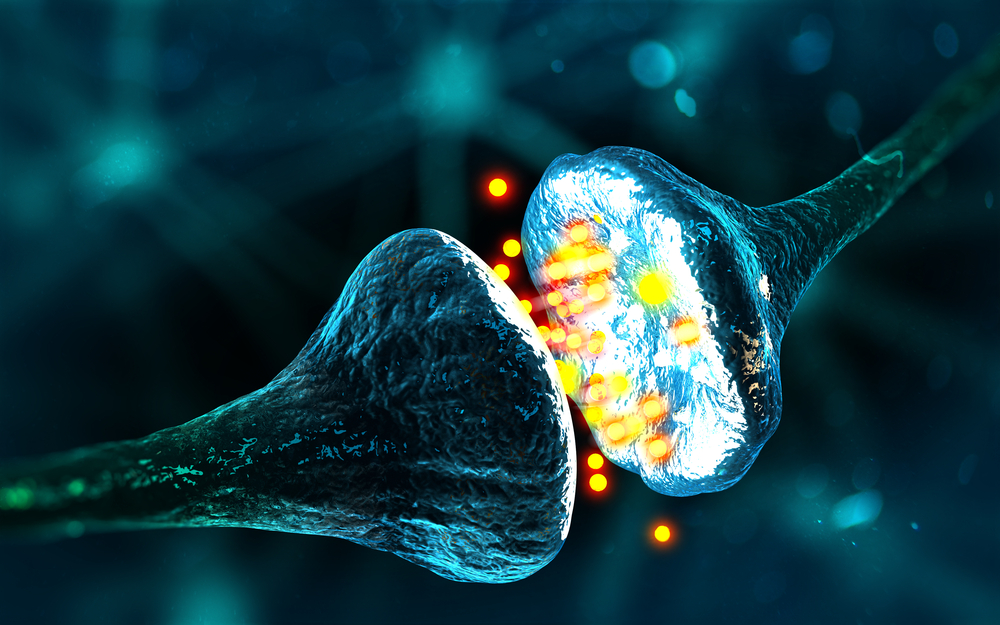Parkinson’s Researchers Unravel How Toxic Alfa-synuclein Affects Memory Nerve Cells

Scientists are closer to understanding how toxic alpha-synuclein (α-syn) aggregates affect the nerve cells involved in memory, which may point to new therapeutic strategies to prevent the development of cognitive dysfunction in Parkinson’s and Lewy body dementias.
The study, “α-Synuclein fibril-induced paradoxical structural and functional defects in hippocampal neurons,” was published in the journal Acta Neuropathologica Communications.
Alpha-synuclein accumulation – eventually leading to nerve cell death – is a hallmark of Parkinson’s disease and dementia with Lewy bodies. Changes in nerve cell activity have been associated with the development of different forms of dementia, and shown to precede nerve cell damage in neurodegenerative diseases such as Alzheimer’s disease.
While the effects of alpha-synuclein aggregates in dopamine nerve cells of the brain region involved in motor function has been studied extensively, its effects in other type of brain neurons, such as those located in the hippocampus – a brain region that plays a key role in memory formation – is unknown.
To understand what happens in hippocampal nerve cells when alpha-synuclein aggregates start to form – before cell death – researchers at the University of Alabama School of Medicine and Yale University used a model to generate alpha-synuclein aggregates in mouse nerve cells.
The model – previously developed by researchers at the University of Pennsylvania, including Laura Volpicelli-Daley, PhD, the current study’s co-senior author – consists of two steps.
The first step is the generation of alpha-synuclein fibrils from synthetic alpha-synuclein molecules, by putting them in a test tube and shaking it for several days. Next, mouse nerve cells in culture are exposed to the pre-formed fibrils, which are internalized and induce the recruitment of soluble alpha-synuclein to form aggregates that resemble the toxic, insoluble aggregates found in Parkinson’s and dementia with Lewy bodies.
With time, the formation and accumulation of toxic alpha-synuclein aggregates starts to impair nerve cell function, ultimately leading to cell death. All these features make this a good model to study aggregate formation, its impact on nerve cell function, and the development of potential therapeutics.
Researchers investigated what happens in the synapse of hippocampal nerve cells seven days after exposure to alpha-synuclein fibrils, when cell death is not yet present. The synapse is the contact site between nerve cells where an electrical or chemical signal is transmitted from one nerve cell (presynaptic) to another (postsynaptic).
The formation of alpha-synuclein aggregates led to structural and functional changes in these nerve cells, including increased presynaptic activity, reduced postsynaptic activity – through the loss of specific cell protrusions that receive signals from the synapse – and reduced calcium levels, which are essential for signal transmission.
According to researchers, nerve cells appear to be adapting to these changes to prevent abnormally high nerve activation, by reducing the ability of a cell to receive signals from another cell that has increased activity.
These nerve cell alterations may be crucial in the development of dementia and cognitive dysfunction in Parkinson’s and dementia with Lewy bodies. And because they occur before neurodegeneration, it is possible that these cells can be rescued before they die.
“The next step will be looking at how alpha-synuclein increases presynaptic activity and whether this is a loss of alpha-synuclein function in this neuron [nerve cell] compartment or it is caused by formation of toxic alpha-synuclein aggregates,” Volpicelli-Daley said in a press release.
The researchers noted that their work supports the need to develop tools “to detect and remove abnormal α-syn at early stages of disease development,” and that by the time toxic alpha-synuclein forms aggregates, it is possible “the pathway toward neurodegeneration cannot be reversed,” they wrote.






